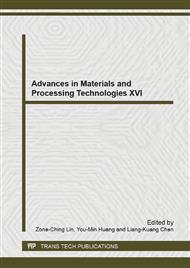p.3
p.11
p.19
p.25
p.31
p.39
p.47
p.53
Deformation Behaviour of TRIP Steel Monitored by In Situ Neutron Diffraction
Abstract:
The paper presents results of in-situ neutron diffraction experiments aimed on monitoring the phase evolution and load distribution in transformation induced plasticity (TRIP) steel when subjected to tensile loading. Tensile deformation behaviour of two TRIP-assisted multiphase steel with slightly different microstructures resulted from different thermo-mechanical treatments applied was investigated by in-situ neutron diffraction. The steel with lower retained austenite volume fraction (fγ=0.04) and higher volume fraction of needle-like bainite in the α-matrix exhibits higher yield stress (sample B, 600MPa) but considerably lower elongation in comparison to the steel with higher austenite volume fraction (fγ=0.08), granular bainite and ferrite matrix (sample A, 500 MPa). The neutron diffraction results showed that the applied tensile load is redistributed at the yielding point in a way that the retained austenite bears a significantly larger load than the α-matrix during the TRIP steel deformation. Steel sample with higher volume fraction of retained austenite and less strong ferrite matrix proved to be a better TRIP steel with respect to strength, ductility and the side effect of the strain induced austenite-martensite transformation. The transforming retained austenite in time of loading provides potential for higher ductility of experimental TRIP steel but at the same time acts as a reinforcement phase during the further plastic deformation.TRIP steel, austenite conditioning, austenite transformation, structure, retained austenite, tensile deformation, neutron diffraction, load partitioning, mechanical properties.
Info:
Periodical:
Pages:
25-30
Citation:
Online since:
May 2014
Authors:
Price:
Сopyright:
© 2014 Trans Tech Publications Ltd. All Rights Reserved
Share:
Citation:


